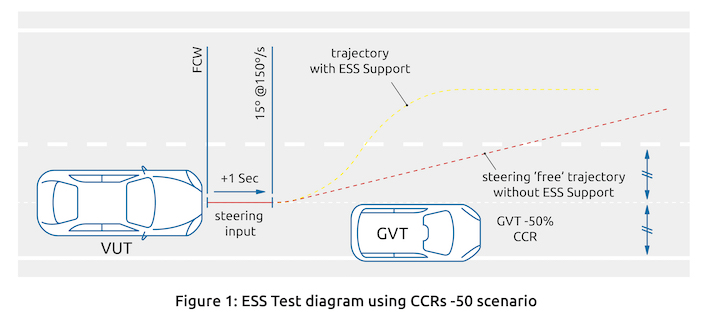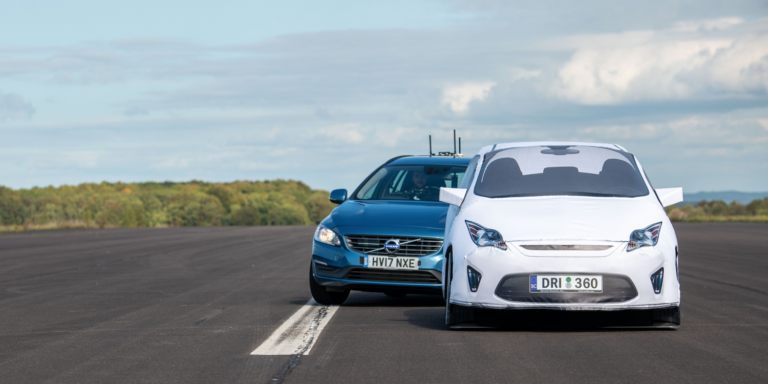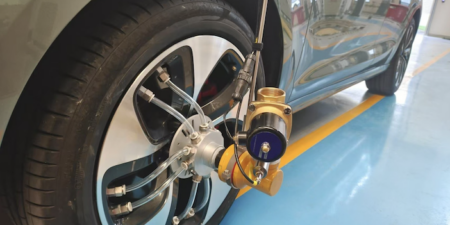A method for testing Emergency Steering Support (ESS) systems to accompany the new Euro NCAP test protocol due to take effect in January 2023 has been developed by automotive test system supplier, AB Dynamics, in collaboration with Euro NCAP’s test labs and various vehicle manufacturers.
For those unfamiliar with ESS, if a potential collision is detected, these systems can act much later than conventional Autonomous Emergency Braking (AEB, which is limited to braking alone), whilst still avoiding a collision. This later intervention is beneficial because at higher speeds it is often more effective for a vehicle to steer around, rather than brake, to avoid a stationary or slow-moving hazard. The system must only intervene when there is intent from the driver to avoid the collision through the steering. Following the driver’s initial input, the ESS system can then take over to rapidly steer the vehicle around the hazard.
However, as Dr Andrew Pick, AB Dynamics’ business director for track test systems explains, “Simulating the panic steering input from a driver in response to an impending collision in a repeatable and consistent manner makes ESS testing challenging. It requires precise control of the target vehicle, the test vehicle, and the triggering of the test vehicle’s steering system. Our approach accurately synchronises all of these elements in the scenario to successfully conduct the test repeatably.”
AB Dynamics has found that by using driving robots, such as its Halo steering robot, it is possible to provide the accurate and repeatable inputs necessary to the test a vehicle’s steering, removing the variability of a human driver. These inputs are controlled by the company’s path-following system, which uses real-time feedback from a GPS-corrected motion pack to guide the test vehicle along a specified path, to an accuracy of up to 2cm.

In the ESS test, the company’s Soft Car 360 or LaunchPad VRU (vulnerable road user) platform can be used to simulate an object that potentially requires an avoidance manoeuvre. The position and speed of the vehicle under test is synchronised with the target to ensure the specific test requirements, such as vehicle speed, overlap position, steering angle and steering angle rate, are accurately met.
You can watch a demonstration of the test method HERE.
“Our method for testing ESS provides the accuracy and repeatability which is crucial to any vehicle testing,” said Dr Pick. “Critically, our solution also provides a multitude of options for triggering the defined steering inputs. These variations can be tested quickly and simply using our control software leading to a thorough assessment of the system ahead of Euro NCAP testing.”






